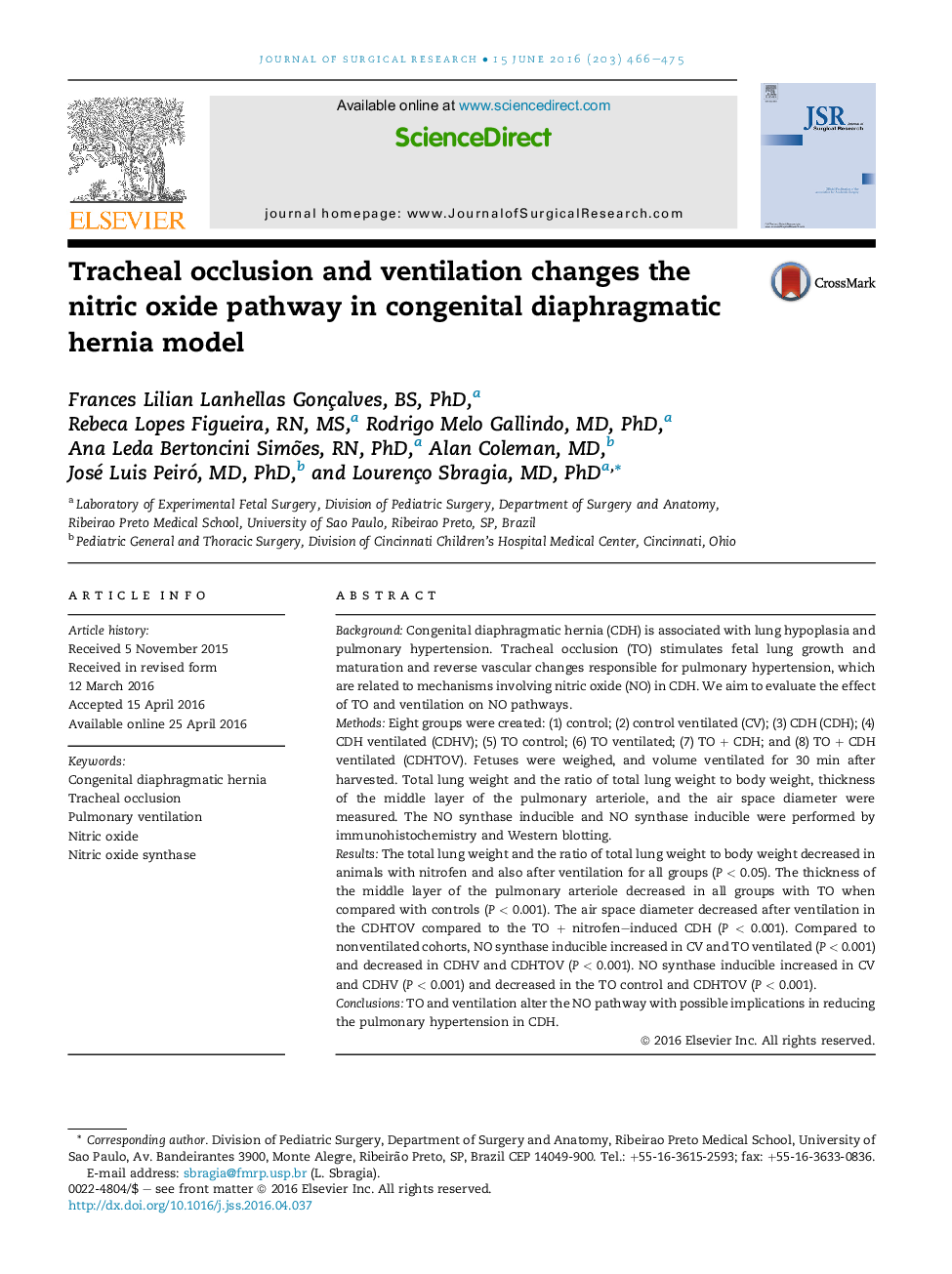| Article ID | Journal | Published Year | Pages | File Type |
|---|---|---|---|---|
| 4299283 | Journal of Surgical Research | 2016 | 10 Pages |
BackgroundCongenital diaphragmatic hernia (CDH) is associated with lung hypoplasia and pulmonary hypertension. Tracheal occlusion (TO) stimulates fetal lung growth and maturation and reverse vascular changes responsible for pulmonary hypertension, which are related to mechanisms involving nitric oxide (NO) in CDH. We aim to evaluate the effect of TO and ventilation on NO pathways.MethodsEight groups were created: (1) control; (2) control ventilated (CV); (3) CDH (CDH); (4) CDH ventilated (CDHV); (5) TO control; (6) TO ventilated; (7) TO + CDH; and (8) TO + CDH ventilated (CDHTOV). Fetuses were weighed, and volume ventilated for 30 min after harvested. Total lung weight and the ratio of total lung weight to body weight, thickness of the middle layer of the pulmonary arteriole, and the air space diameter were measured. The NO synthase inducible and NO synthase inducible were performed by immunohistochemistry and Western blotting.ResultsThe total lung weight and the ratio of total lung weight to body weight decreased in animals with nitrofen and also after ventilation for all groups (P < 0.05). The thickness of the middle layer of the pulmonary arteriole decreased in all groups with TO when compared with controls (P < 0.001). The air space diameter decreased after ventilation in the CDHTOV compared to the TO + nitrofen–induced CDH (P < 0.001). Compared to nonventilated cohorts, NO synthase inducible increased in CV and TO ventilated (P < 0.001) and decreased in CDHV and CDHTOV (P < 0.001). NO synthase inducible increased in CV and CDHV (P < 0.001) and decreased in the TO control and CDHTOV (P < 0.001).ConclusionsTO and ventilation alter the NO pathway with possible implications in reducing the pulmonary hypertension in CDH.
